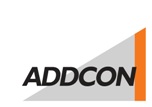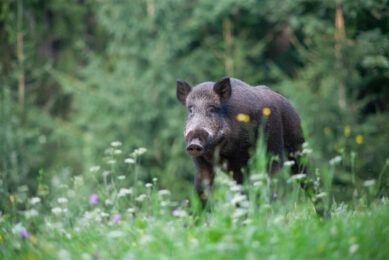Growth in the FORMI® family!

With costs of animal production under mounting pressure, nutrition efficiency is of increasing interest, as this is critical to performance through to market. Sustaining growth rate and optimising feed efficiency are key requirements for economic success.
Christian Lückstädt
ADDCON Group, Bonn, Germany
The use of acidifiers in diets for pigs, poultry and fish is effective in achieving this goal, as demonstrated in trials at university and farm level. The mode of action of organic acids and their salts has been described extensively in the literature (as summarised by Freitag, 2007; Desai et al., 2007; Lückstädt, 2008a). Organic acids, their salts and mixtures of these are authorised for use as feed preservatives and as zootechnical feed additives, in Europe and elsewhere.
The concept of using FORMI, potassium diformate, in pig nutrition is widely described and documented – as a tool to achieve significantly higher weight gains and improved feed efficiency. For example, a trial carried out at a UK pig production site tested the effects of FORMI in a commercial piglet diet. Feed and water were available ad libitum throughout the 49-day trial period to a total of 420 randomly selected weaned piglets (28 days of age). The piglets (Landrace x Duroc x PIC) were housed in groups of 15 pigs per pen over the 49-day trial period. Performance data were measured during diet shifts and at the end of the trial. The control group received neither acidifier nor natural growth promoter, while the treatment group had 12 kg of FORMI per tonne of feed added to the diet. Table 1 shows that the overall performance in the group with FORMI was improved significantly (P<0.05). The addition of 12 kg/t FORMI resulted in an improvement of 14.6% in weight gain and an increase of 3.8% in feed intake, while the feed conversion rate was improved by 9.4% over the negative control (Eidelsburger et al., 2007).
Table 1: Effect of FORMI on performance parameters of weaned piglets (data from Eidelsburger et al. 2007)
 |
a, b: Means with a different superscript differ significantly at P<0.05
Converting productivity data into economic performance, based on an average feed and pig prices, showedthat FORMIcould yield economic pig production and improve profits (ROI = 4.5) compared to a diet with no performance enhancer during the crucial time post-weaning (Lückstädt, 2008b).
These trial data are further supported by the results of statistical analysis. Holo-analysis of the data (Rosen, 2008) proved that that the inclusion of FORMI (based on 59 published trial results) has beneficial effects on feed intake (+3.52%), live weight gain (+8.67%) and feed conversion ratio (-4.20%) in pigs (Mellor, 2008).
This proven concept has now been developed by ADDCON to benefit a wider range of species.
Recent trials in aquaculture showed that AQUAFORM, based on the same substance as FORMI, also has significant benefits in fish culture. AQUAFORM was tested as a growth promoter in tilapia grow-out in Indonesia (Table 2). In this study, fish were fed over a period of 85 days 6 times a day diets containing different concentrations of AQUAFORM (0%, 0.2%, 0.3% and 0.5%). The diets contained 32% crude protein, 25% carbohydrates, 6% lipids and 10% fibre. The fish were challenged orally starting at day 10 of the culture period with Vibrio anguillarum at 105 CFU per day, over a period of 20 days (Ramli et al., 2005).
Over the entire feeding period, from day 1 to 85, AQUAFORM significantly increased feed intake (P<0.01) and weight gain (P<0.01) and significantly improved the feed conversion ratio (P<0.01). Furthermore, protein efficiency ratio was also significantly improved due to AQUAFORM addition (P<0.05). The improvement was best with 0.2% and 0.5% addition of AQUAFORM. Survival rates of fish after the challenge with V. anguillarum on day 10 were also significantly higher compared to the negative control and the effect was dose dependent (P<0.01).
Table 2: Effects of AQUAFORM supplementation in diets on performance of tilapia challenged with V. anguillarum (modified from Ramli et al., 2005)
 |
It was concluded that the dietary inclusion of AQUAFORM at 0.2% is an efficient tool to control bacterial infections in tropical tilapia culture.
The latest development in the FORMI group is the achievement of a product dedicated for use in poultry. FORMI NDF, a premix of sodium formate and formic acid, is used in broiler and turkey production. These sectors are especially vulnerable to the impacts of undesirable bacteria, therefore feed hygiene is of utmost importance. FORMI NDF is specially designed to improve these conditions. A recent trial demonstrated the impact of such a feed additive – the results proved irrefutably its efficacy against Campylobacter and Salmonella. The product was able to improve conditions in the feed, thus reducing the amount of those bacteria in the crop and the faeces.
With the addition of AQUAFORM and FORMI NDF to the FORMI family the product range now comprises group of additives, which improve feed hygiene as well as performance parameters in livestock and aquaculture.
References
- Desai, D., Patwardhan, D. and Ranade, A. (2007). Acidifiers in poultry diets and poultry production. In: Lückstädt, C. (ed.). Acidifers in Animal Nutrition – A guide for feed preservation and acidification to promote animal performance. Nottingham University Press, UK, pp.63-69.
- Eidelsburger, U., Wald, C. and Portocarero-Khan, N. (2007). Effect of potassum diformate (Formi®) inclusion at two different dietary protein levels on performance and health of weaner piglets. Tagungsband 6. BOKU-Symposium Tierernährung: Sekundärwirkungen von Futterinhaltstoffen – vom Nährstoff zum Wirkstoff. Vienna, Austria. pp. 248-253.
- Freitag, M. (2007). Organic acids and salts promote performance and health in animal husbandry. In: Lückstädt, C. (ed.). Acidifers in Animal Nutrition – A guide for feed preservation and acidification to promote animal performance. Nottingham University Press, UK, pp.1-11.
- Lückstädt, C. (2008a). The use of acidifiers in fish nutrition. CAB Reviews: perspectives in Agriculture, Veterinary Science, Nutrition and Natural Resources 2008, 3, No. 044. http://www.cababstractplus.org:80/cabreviews.
- Lückstädt, C. (2008b). Effects of Formi (potassium diformate) on the performance of weaning piglets. Feed Compounder, July 2008, pp. 38-39.
- Mellor, S. (2008). Holoanalysis – information in action for organic acids. Feed Compounder, August 2008, pp. 21-23.
Rosen, G.D. (2008). Holo-analysis of the efficacy of acids as pronutrients in pig nutrition. Abstracts of the British Society of Animal Science, CD-Rom, p. 85











